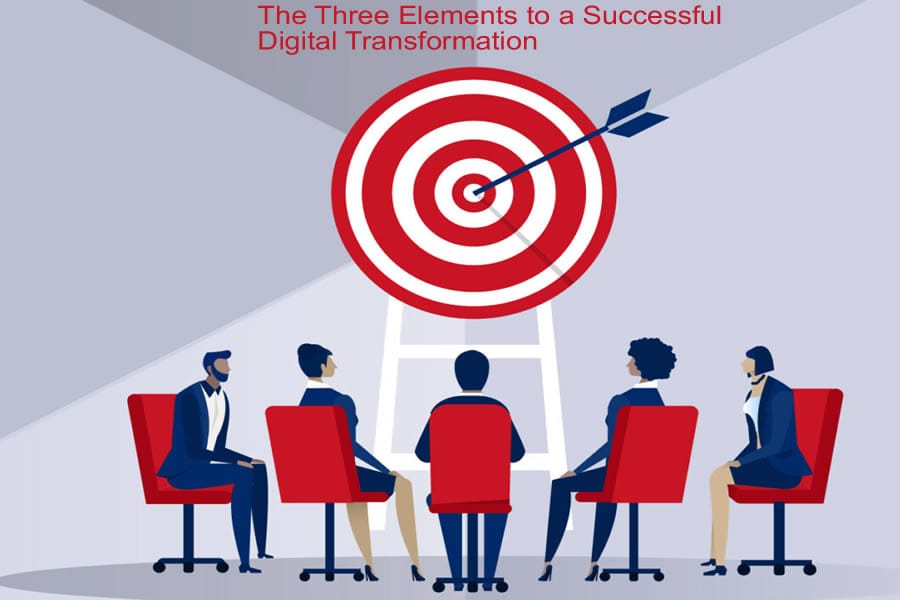In recent weeks, many Nigerians have experienced downtimes from their banks, often preceded by messages about system upgrades linked to their digital transformation journey. While the wording may vary, the common reason for these disruptions is the shift towards digital transformation. But what does this really entail?
According to Salesforce, digital transformation is “the process of using digital technologies to create or modify existing business processes, culture, and customer experiences to meet changing business and market requirements.” Essentially, it involves leveraging emerging technologies to adapt to evolving customer expectations and market dynamics.
Industries across the globe are undergoing this transformation: Fintech is revolutionizing finance, robotics dominates manufacturing, and the Internet of Things (IoT) is transforming agriculture. Companies everywhere are embracing digital technologies, making digital transformation essential for long-term success.
Why Digital Transformation Matters
To remain competitive and relevant, both individuals and organizations must embrace digital transformation. For individuals, this is a personal responsibility, but for businesses, especially start-ups and technopreneurs, this can be a complex and daunting task.
This article provides a crash course on digital transformation, outlining three critical pillars that businesses must focus on to successfully navigate this journey:
- Culture
- Technology
- Innovation
1. Culture: The Foundation of Transformation
Culture refers to the shared values, norms, and practices within an organization. It shapes how employees interact, make decisions, and adapt to change. For any digital transformation to succeed, there must be a cultural shift aligned with the organization’s strategic vision and goals. This involves reshaping mindsets, reimagining workflows, and fostering an environment that supports digital adoption.
Cultural transformation can be challenging. For example, the resistance to hybrid work models before the COVID-19 pandemic is a testament to how difficult it can be to shift traditional ways of working. Today, however, many financial institutions rely on hybrid teams to drive their digital transformation efforts.
Overcoming entrenched mindsets is often the hardest part of cultural change. Rigid structures and compartmentalized departments are incompatible with the collaborative and agile approaches needed for digital innovation. Open, collaborative workspaces may initially cause cultural shocks, but they are necessary for long-term success.
Effective cultural transformation requires clear goals, strong leadership support, and careful management of resistance. Middle managers need to be adaptable, while senior executives must commit time and resources to champion the change. Once the team aligns with the organization’s digital vision, the foundation for transformation is set.
2. Technology: The Enabler of Change
Technology is the second pillar of digital transformation. Throughout history, technological advancements have driven major shifts—from the mechanization of production to the widespread use of electricity and IT. Today, the Fourth Industrial Revolution is marked by rapid advancements in artificial intelligence (AI), cloud computing, data analytics, and robotics.
Given the fast pace of change, businesses risk deploying outdated technology if they take too long to implement solutions. On the other hand, rushing to adopt new technologies without proper planning can expose systems to cyber threats. Many organizations now use agile methodologies to develop and deploy technology iteratively, ensuring solutions evolve with market needs.
For technology to drive transformation, it must align with the organization’s goals, environment, and regulatory constraints. In some regions, regulatory requirements, such as the need for local data centers, heavily influence technology decisions.
Successful technology deployment also requires active engagement from all stakeholders. Lack of stakeholder buy-in can lead to delays, underutilized systems, and even internal resistance. Proper training and communication are essential to ensure that technology solutions are adopted effectively.
3. Innovation: The Visible Outcome
Innovation is the most visible pillar of digital transformation. It represents the tangible results of creativity supported by the right culture and technology. This includes new products, services, platforms, and processes that reflect an organization’s ability to lead in the digital age.
True innovation starts internally. For example, while many financial institutions have eliminated paper-based processes in customer-facing activities, they may still rely on manual paperwork internally. This inconsistency hinders the full realization of digital transformation. Internal processes must align with the organization’s commitment to innovation before those values can be translated into customer-facing solutions.
Product innovation should be driven by a deep understanding of customer needs. A product is only valuable if it meets user requirements. Given the speed of technological change, rapid time-to-market is crucial. Businesses must balance novelty with practicality to ensure that every innovation adds genuine value to the end-user.
Conclusion: A Call to Action
Digital transformation is not a one-time project—it is an ongoing journey that requires a holistic approach. Many organizations fail in their transformation efforts due to poor alignment with one or more of the foundational pillars: culture, technology, and innovation.
To succeed, businesses embarking on digital transformation should follow these recommendations:
- Start from the Top: Leadership must have a clear understanding of digital goals and a commitment to change.
- Cultural Alignment: Define clear cultural goals and communicate transparently.
- Continuous Learning: Encourage team members to learn, unlearn, and relearn to keep up with digital advancements.
- Reskill and Retrain: Implement robust reskilling programs to mitigate fears of redundancy.
- Right Technology Fit: Deploy technology that aligns with the organization’s vision and engage all stakeholders.
- Build Internal Competency: Even with external vendors, build internal expertise to manage technology post-deployment.
- Cybersecurity Focus: Prioritize cybersecurity in every aspect of technology deployment.
- Customer-Centric Design: Design products based on user needs, tested iteratively through market research.
- Adaptability: Understand that customer expectations evolve, and today’s premium solution may become tomorrow’s baseline.
In conclusion, a successful digital transformation relies on a balanced integration of culture, technology, and innovation. Businesses that adopt these three pillars will not only stay competitive but also lead in the Fourth Industrial Revolution.

